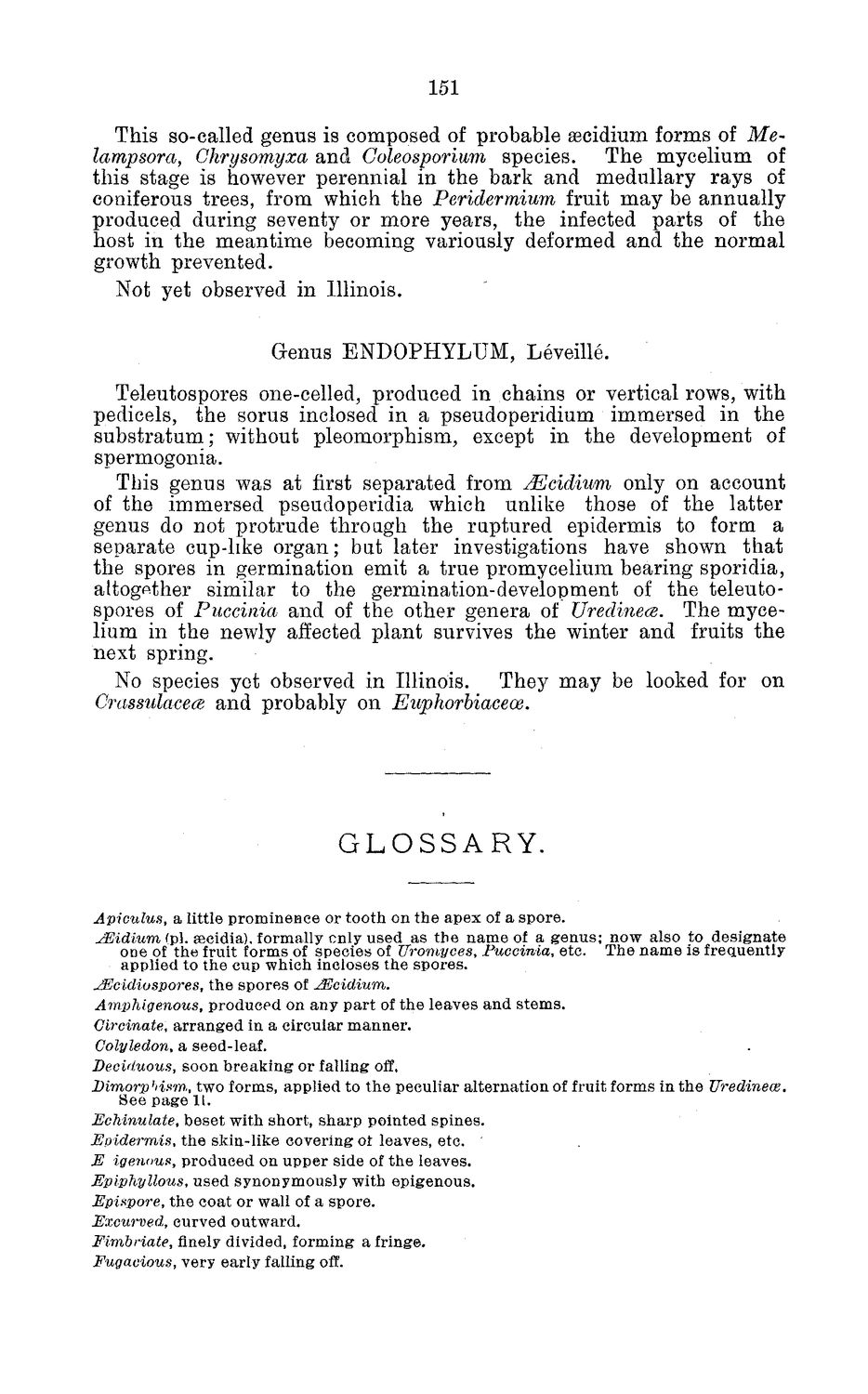| |
| |
Caption: Board of Trustees Minutes - 1884
This is a reduced-resolution page image for fast online browsing.

EXTRACTED TEXT FROM PAGE:
151 This so-called genus is composed of probable secidium forms of Melampsora, Chrysomyxa and Coleosporium species. The mycelium of this stage is however perennial in the bark and medullary rays of coniferous trees, from which the Peridermium fruit may be annually produced during seventy or more years, the infected parts of the host in the meantime becoming variously deformed and the normal growth prevented. Not yet observed in Illinois. Genus ENDOPHYLUM, Leveille. Teleutospores one-celled, produced in chains or vertical rows, with pedicels, the sorus inclosed in a pseudopendium immersed in the substratum; without pleomorphism, except in the development of spermogonia. This genus was at first separated from Mcidium only on account of the immersed pseucloperidia which unlike those of the latter genus do not protrude through the raptured epidermis to form a separate cup-like organ; but later investigations have shown that the spores in germination emit a true promycelium bearing sporidia, altogether similar to the germination-development of the teleutospores of Puccinia and of the other genera of Uredinece. The mycelium in the newly affected plant survives the winter and fruits the next spring. No species yet observed in Illinois. They may be looked for on Crassulacete and probably on Euphorbiaceoe. GLOSSARY. Apiculus, a little prominence or tooth on the apex of a spore. JEidium (pi. aecidia). formally only used as the name of a genus; now also to designate one of the fruit forms of species of Uromyces, Puccinia, etc. The name is frequently applied to the cup which incloses the spores. JEcidiuspores, the spores of Mcidium. Amphigenous, produced on any part of the leaves and stems. Circinate, arranged in a circular manner. Cotyledon, a seed-leaf. Deciduous, soon breaking or falling off, Dimorphism,, two forms, applied to the peculiar alternation of fruit forms in the Uredinece. See page 11. Echinulate, beset with short, sharp pointed spines. Epidermis, the skin-like covering ot leaves, etc. E igenous, produced on upper side of the leaves. Epiphyllous, used synonymously with epigenous. Epispore, the coat or wall of a spore. Excurved, curved outward. Fimbriate, finely divided, forming a fringe. Fugacious, very early falling off.
| |